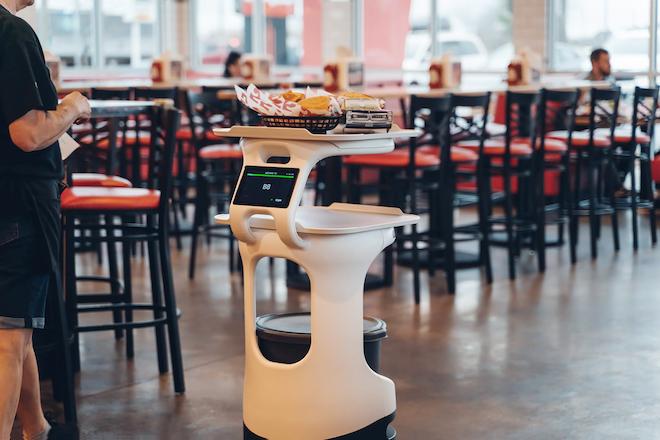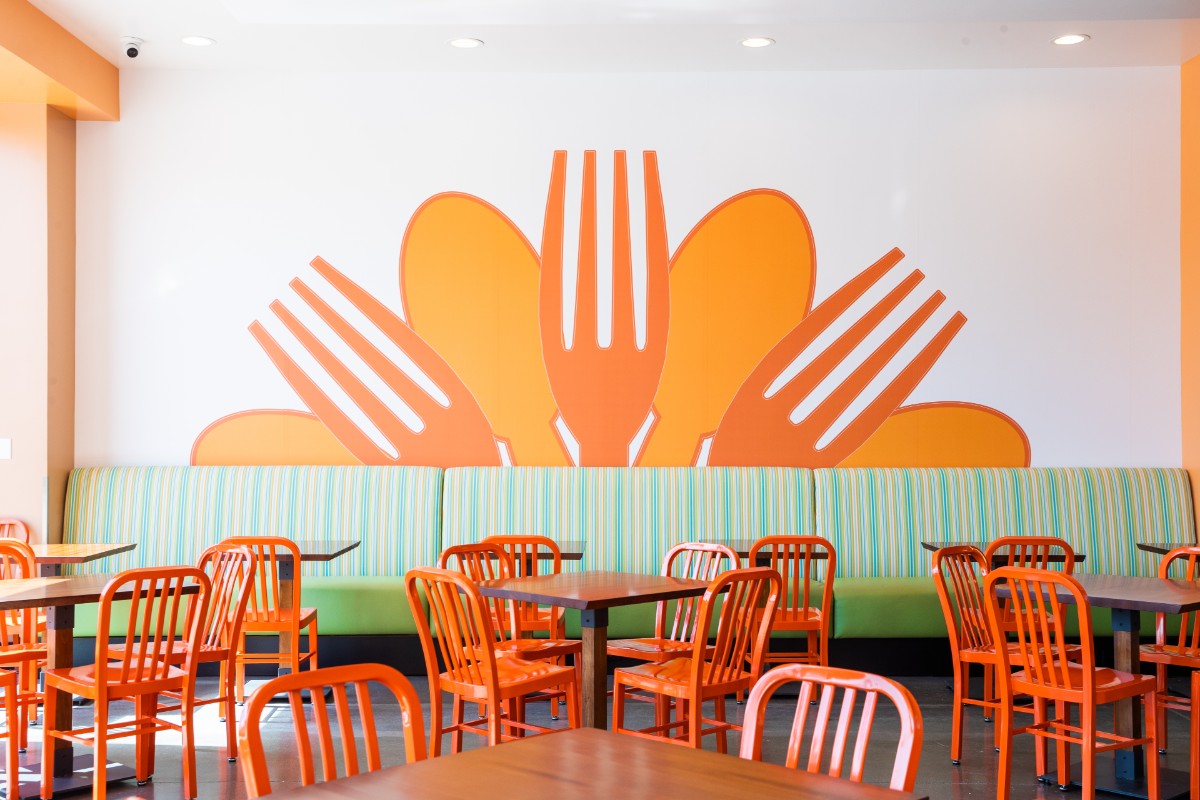
In a time when restaurants face staffing shortages and new challenges, Rachel’s Kitchen has turned to technology to enhance efficiency and service quality. Located in Las Vegas, Nevada and Frisco, Texas the Rachel’s Kitchen fast-casual franchise has successfully integrated a robot server, Servi, to support its human team members at the brand’s largest location. This move highlights a broader trend in the restaurant industry, where automation and robotics are becoming vital tools to address labor shortages and enhance customer experience.
How the Robotics Trend Began
Rachel’s Kitchen first explored the idea of robotic servers in late 2021. Founder and CEO Debbie Roxarzade had taken note of similar innovations in the industry, spurred initially by curiosity but driven further by the impact of the COVID-19 pandemic. When the restaurant industry struggled to retain and hire staff during the pandemic, Roxarzade saw an opportunity to test out robotics as a solution to these issues. The timing was right as restaurants were grappling with various challenges, from social distancing to staffing constraints. This innovation aligned with the need to bring customers back to restaurants while maintaining a safe environment.
“I started to look more seriously at them during COVID,” Roxarzade shared. “We were looking for ways to help the team that was there, when it was a hard time to get new team members and all of the other challenges for the industry.”
This context makes Rachel’s Kitchen’s adoption of robot servers more than just a gimmick. It was a strategic move to assist staff when human resources were limited, allowing employees to focus on more critical tasks like customer service while letting the robot handle the routine, time-consuming parts of food delivery.
How Servi Operates
The robot, named Servi, was developed by Bear Robotics and has a specific set of tasks that complement the workflow of Rachel’s Kitchen. Its primary role is to carry dishes from the kitchen to tables and back, reducing the physical strain on the staff and enabling faster table turnover. Programmed with a complete layout of the restaurant, Servi operates autonomously, moving dishes to and from the kitchen. It even has a home station near the restaurant’s counter, making it easy for the staff to load trays and send them off to the correct table.
One key feature of Servi’s programming is its ability to ensure every item is removed from its trays before it returns to its station. This thoughtful design prevents any mishaps and ensures a smooth service. Staff members have reported that this automation allows them to stay focused on the core aspects of customer interaction rather than constantly running back and forth from the kitchen.
Overcoming Initial Skepticism
When Servi was first introduced, there was concern among customers that this new technology might lead to job losses. The rise of automation in industries often brings worries about the displacement of human workers. Roxarzade, however, was quick to clarify that the robot was designed to assist the team, not replace them.
“Very early on, when we first put it in, there were some people saying, ‘Please don’t let this replace your staff, we don’t want this taking people’s jobs away,’” Roxarzade explained. “But we explained it’s not here to take anyone’s job, it’s to help our team because they’re working hard and we were having trouble finding people.”
Once customers understood the robot’s purpose as a tool for enhancing service rather than replacing staff, the response turned overwhelmingly positive. Many patrons, especially families with children, found the robot server to be an enjoyable addition to their dining experience.
As the restaurant’s operations became smoother, Roxarzade noted that the robot provided tangible relief for the team. Servers could focus on taking orders and managing guest needs while the robot handled the more mechanical aspects of food delivery. This blending of human service with robotic assistance enhanced the overall efficiency of the restaurant.
Future Expansion of Robotics at Rachel’s Kitchen
Currently, Rachel’s Kitchen uses Servi at only one of its nine locations, but Roxarzade hasn’t ruled out future expansions of robotic assistance. However, given the cost of implementing the technology, she remains selective. The larger footprint of their main location made it the ideal candidate for the robot, while smaller locations may not have the same needs or resources to justify the investment.
That said, Roxarzade mentioned that if the brand continues to expand into larger-sized spaces, the technology could become a more significant part of their operational strategy. Customer feedback has been overwhelmingly positive, and the operational benefits have been clear, so the prospect of integrating robots into future locations remains on the table.
Conclusion: Embracing a Hybrid Future
Rachel’s Kitchen’s use of Servi and its exploration of robotics technology underscores a growing trend in the restaurant industry—automation is here to stay, but it’s not about replacing humans. Instead, it’s about enhancing the service experience, making restaurant operations more efficient, and providing staff with the tools they need to excel in customer interaction.
While there may be some initial hesitancy from both staff and customers, Rachel’s Kitchen has shown that, when introduced thoughtfully, robotics can be an asset to a business. As the industry continues to evolve, we’re likely to see more restaurants embracing this hybrid model, where humans and robots work side by side to deliver exceptional dining experiences.

